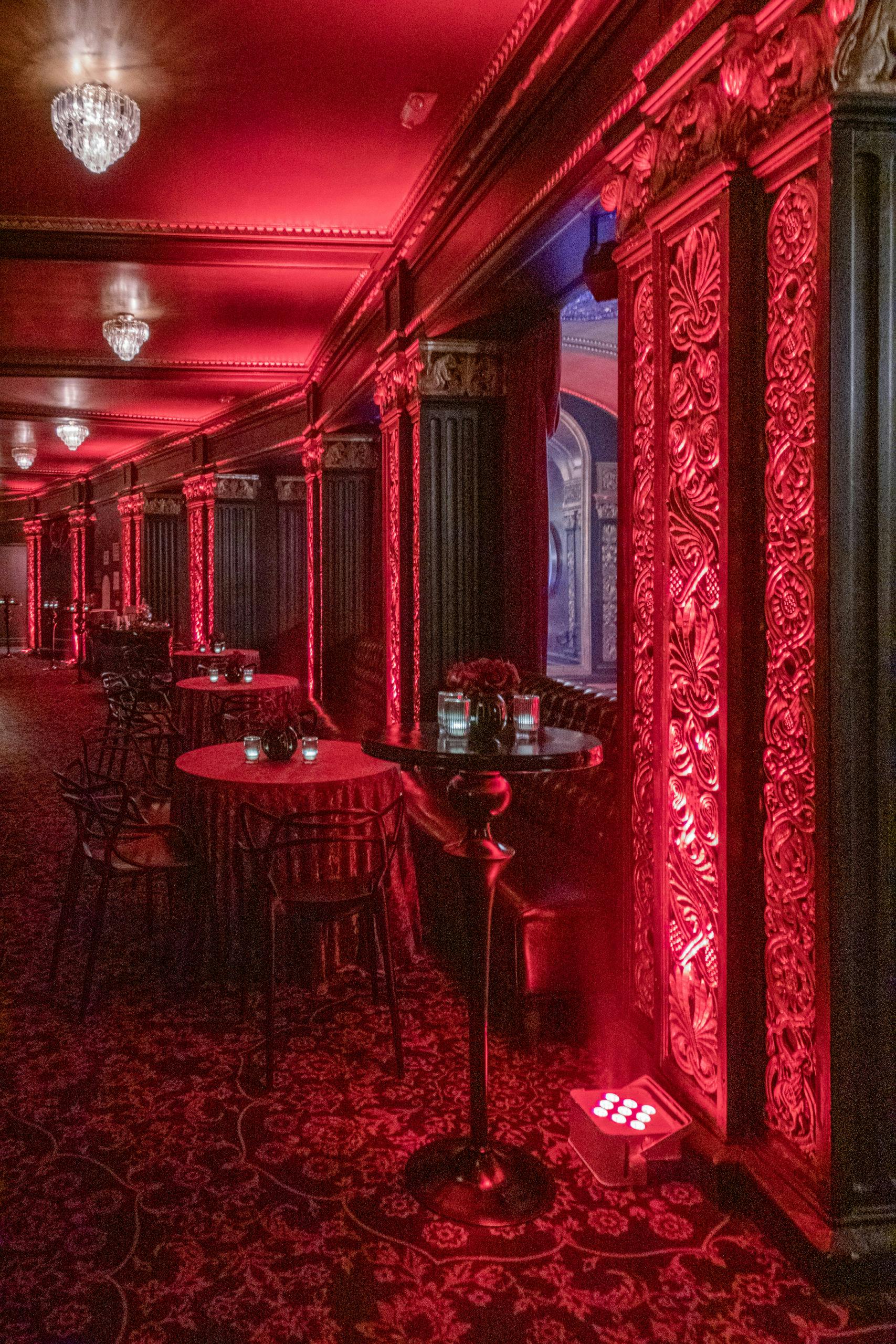Of the many lessons I’ve learned about memorable events while working at PartySlate, the most enduring truth is this: well-planned event lighting is essential. Lighting, when done well, by an experienced professional/artist, creates mood, highlights important moments, transitions guests from one element of a celebration to another, adds texture and color, and so much more.
We recently sat down with David Milowitz, Creative Director of ESP Creative, trusted event production and entertainment firm, to discuss the importance of event lighting. The team has gleaned invaluable experience from years of producing everything from corporate and experiential gatherings to weddings and other milestone celebrations. And while ESP’s services encompass far more than lighting (think design, fabrication, sound, staging, event management, and speciality talent), their lighting design and production is especially epic.
Read on to see what Milowitz of ESP Creative has to say about how lighting can elevate every moment of your event — and what you should consider when planning your gathering.
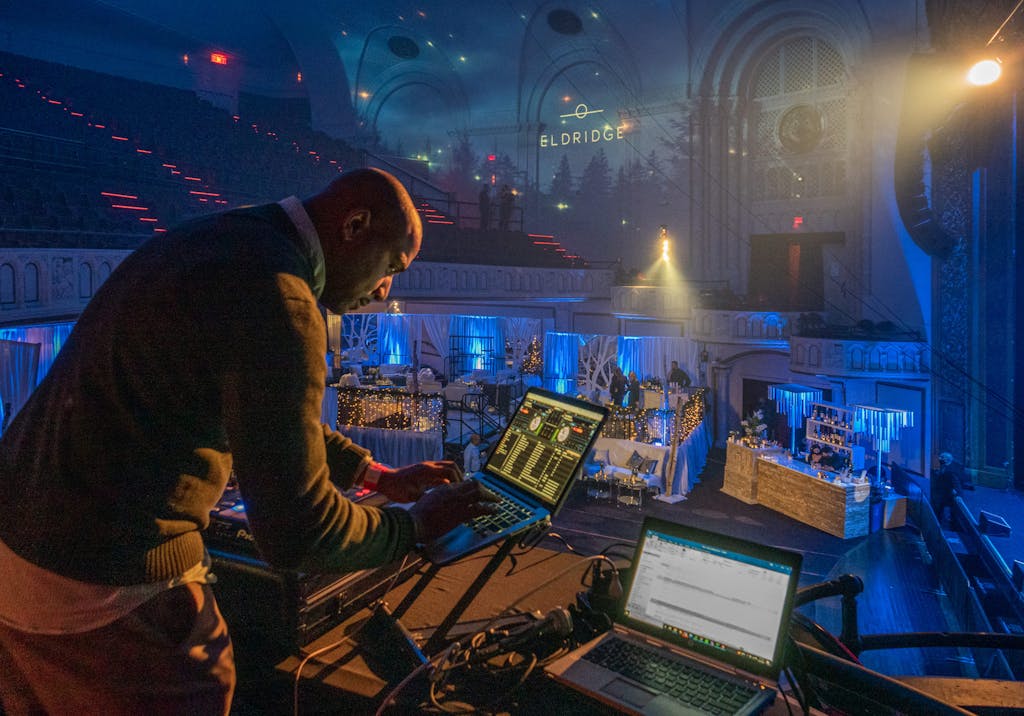
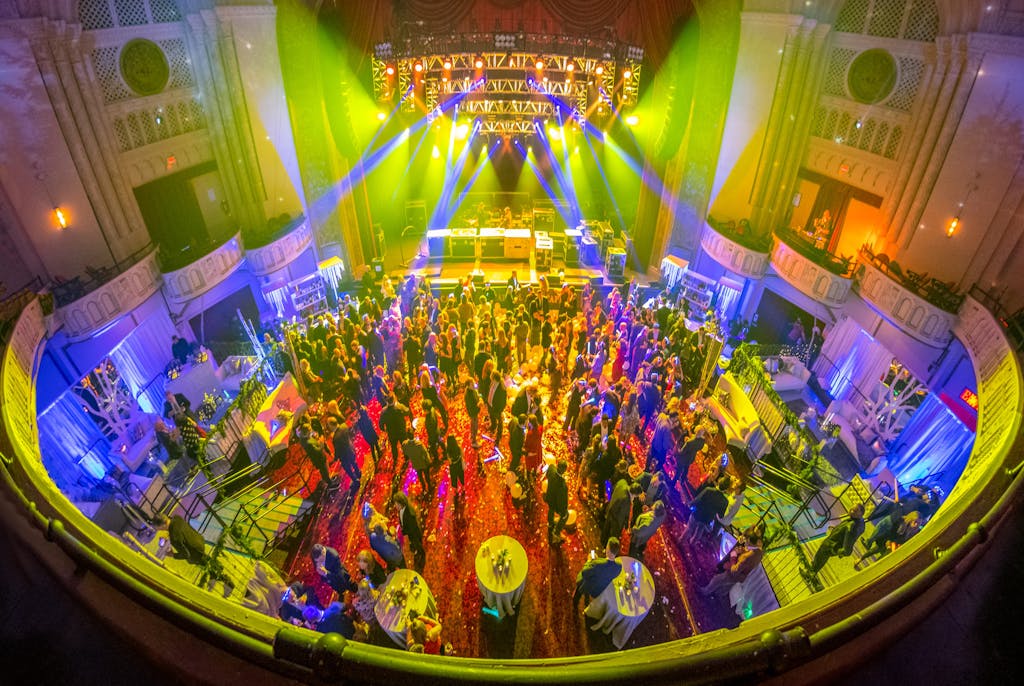
Winter Wonderland Holiday Party at Capitol Theatre | photographer: Scott Harris
What exactly is “event production,” and what services are offered?
Event production consists of any component used to create the foundation of an experience. The three most common components are: sound, lighting, and video. It’s often that these components work hand-in-hand or overlap.
Within sound, there is audio for recorded things such as a film or a sizzle release. There is also live audio — which could be spoken-word like a conference, or singing like in a concert.
Lighting has many facets. We could be focusing on a spot or area, so that guests can see what’s happening in a dark room, or we could be projecting leafy patterns on the walls to make the vibe of the room feel like a jungle.
Video is an interesting one, because, while it’s often a vehicle to display specific content, it is also utilized as another light source with interesting ambient designs to amplify an overall experience. Sometimes the video has audio, and sometimes it doesn’t.
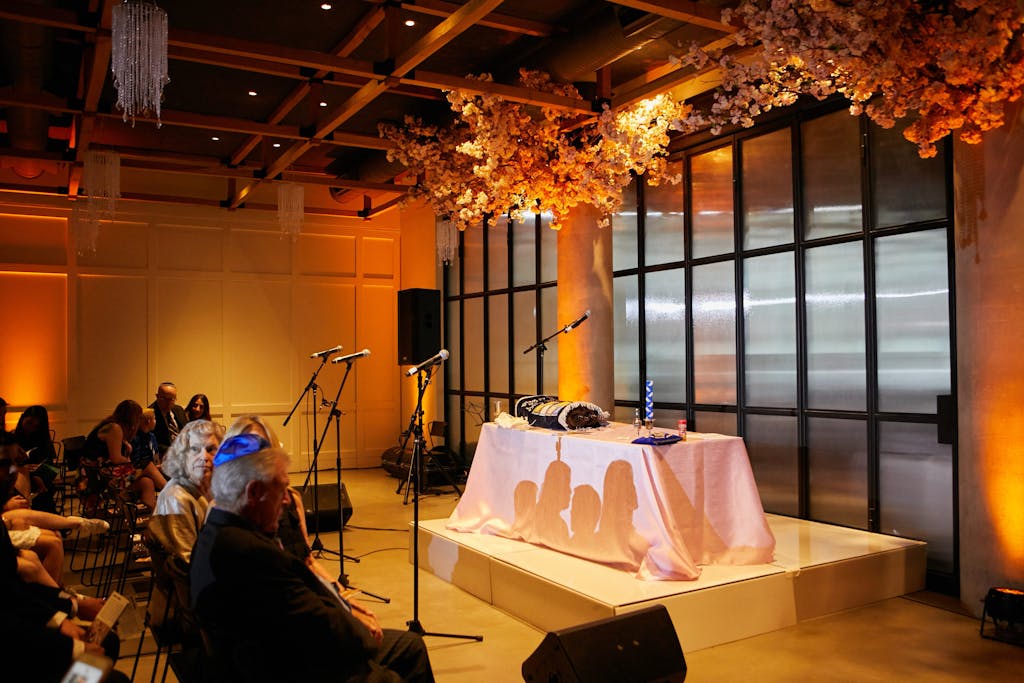
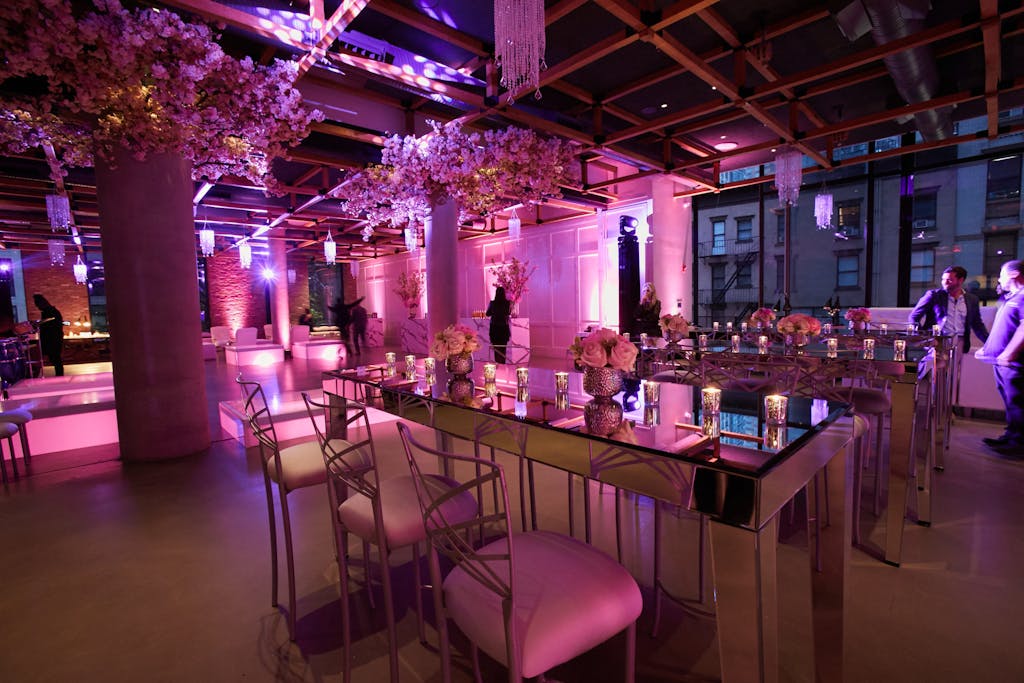
Pretty in Pink Bat Mitzvah Celebration at SECOND. | photographer: Rebecca Weiss Photography
How can lighting be used to create ambiance at an event?
Let’s first note that there are many different reasons for having events — and lighting is most often needed for ALL of these reasons. Think of a lighting designer as a painter. The venue is the canvas. The surfaces, time of day, and goals of the event are the paints or “mediums” that can be chosen from to create a masterpiece.
Then, think about the fact that lighting can be stagnant, or it can move. The most common application for lighting is a stage wash, which is a pretty powerful spotlight that accentuates an area (so that guests can see what’s going on in that area).
Next would be room uplighting. This effect splashes color and/or texture on the venue’s surfaces (not always just walls). Moving lights have the ability to change the ambiance and energy level throughout the course of an event. Fast lights (light you might see in a night club) could raise adrenaline, whereas slow scrolling lights might lull someone to relaxation.
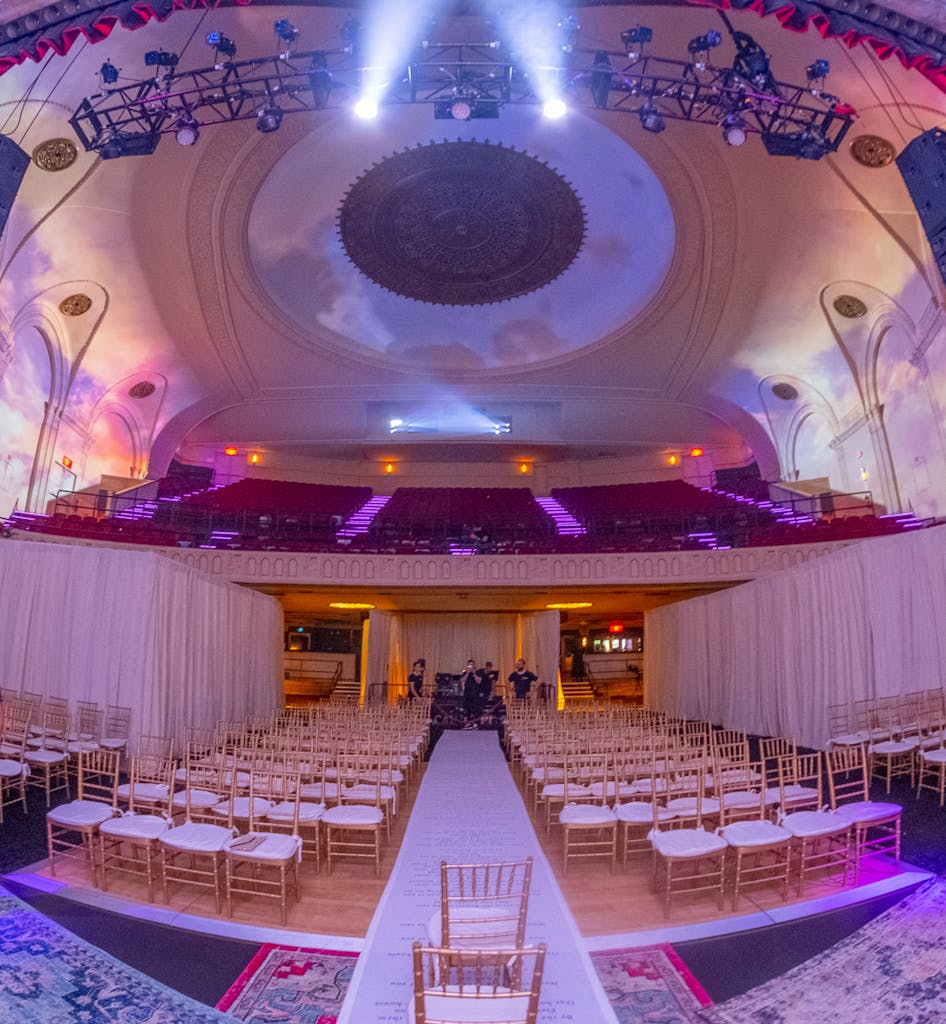
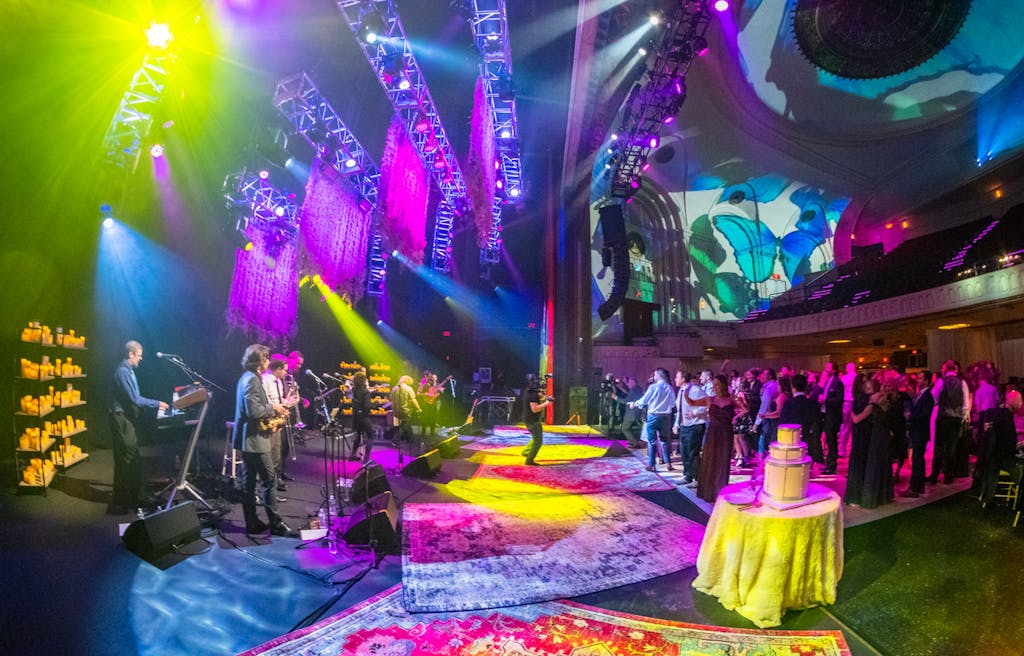
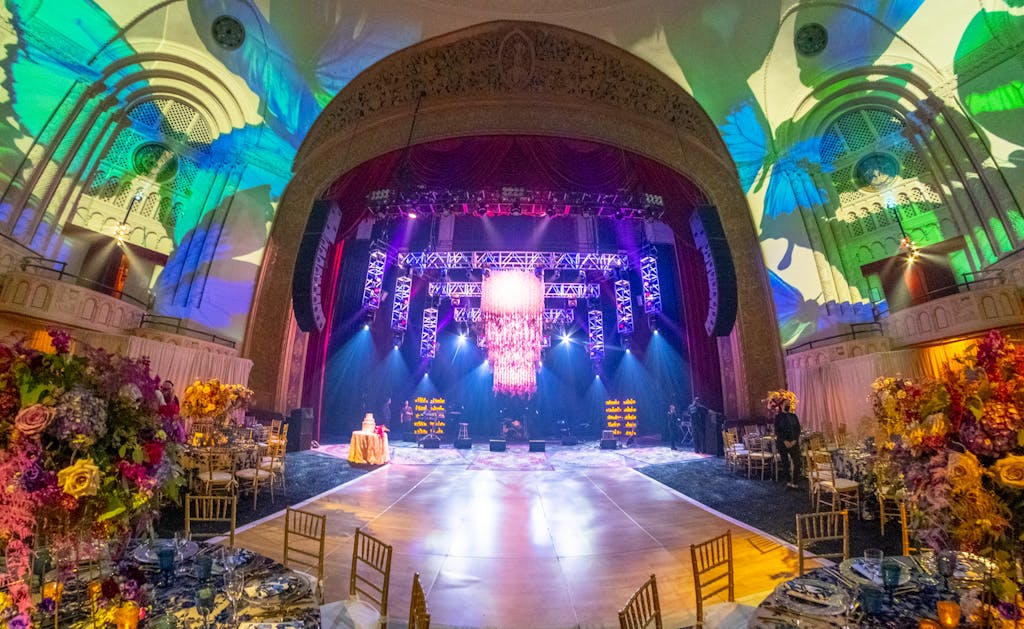
Fairy Tale Wedding at The Capitol Theatre | photo courtesy of: The Capitol Theatre
How can lighting indicate a shift in the focus of a party (ie., from dinner to dancing, cocktails to speaker presentations, etc.)?
I look at every event, regardless of the purpose, as a theatrical experience. As lighting colors and temperatures (intensity) shift, they can accentuate specific moments. Let’s take wedding lighting in a venue with no windows, for an example. First, guests arrive — think of a bright and cheery aesthetic. Lighting is at 60% intensity for guests to greet and mingle.
As the time comes for a ceremony, the lighting dims, and guests are instantly aware that drama is happening — it’s time to take their seats. If this is done effectively, there should be no need for a verbal cue to guests.
Focused wash lights come to 70% to highlight the ceremony position. It’s possible that during the dim shift, some of the wedding party sneaks into position in order to be revealed by this lighting shift. Then, the aisle lighting wash raises to match the ceremony position as the processional begins. As the bride makes her way to complete the procession, the aisle dims. Only lights on the ceremony position are on. This creates a dramatic focal point. Nothing else is accented; there are no other distractions.
Reception room opens, and there is a textured wash of patterns that are slightly out of focus to create a dreamy and alive feeling to the room. These patterns could be ever so slightly moving to infuse the room with some energy. Guests come in, then dancing begins, and the patterns change so that the focal point becomes the dancing area. The lighting fixtures speed up as guests’ adrenaline picks up. There is often and ebb and flow to a wedding reception between dancing and dining (with some speeches). The speed and intensity of the lighting transitions between each experience — so as to create the appropriate environment to execute the next portion.
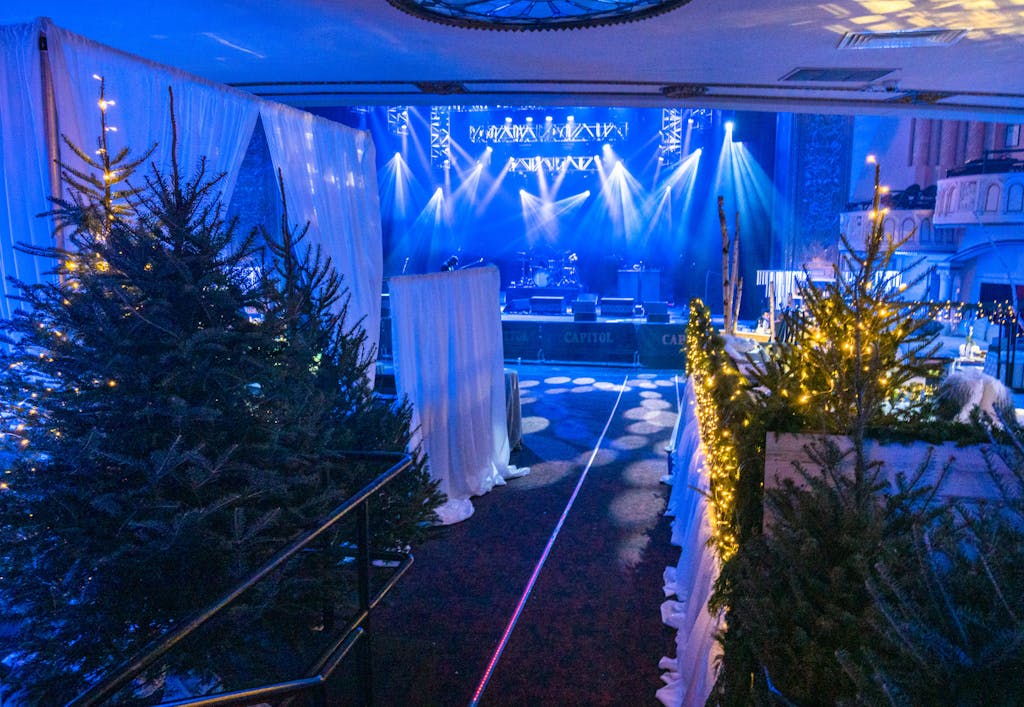
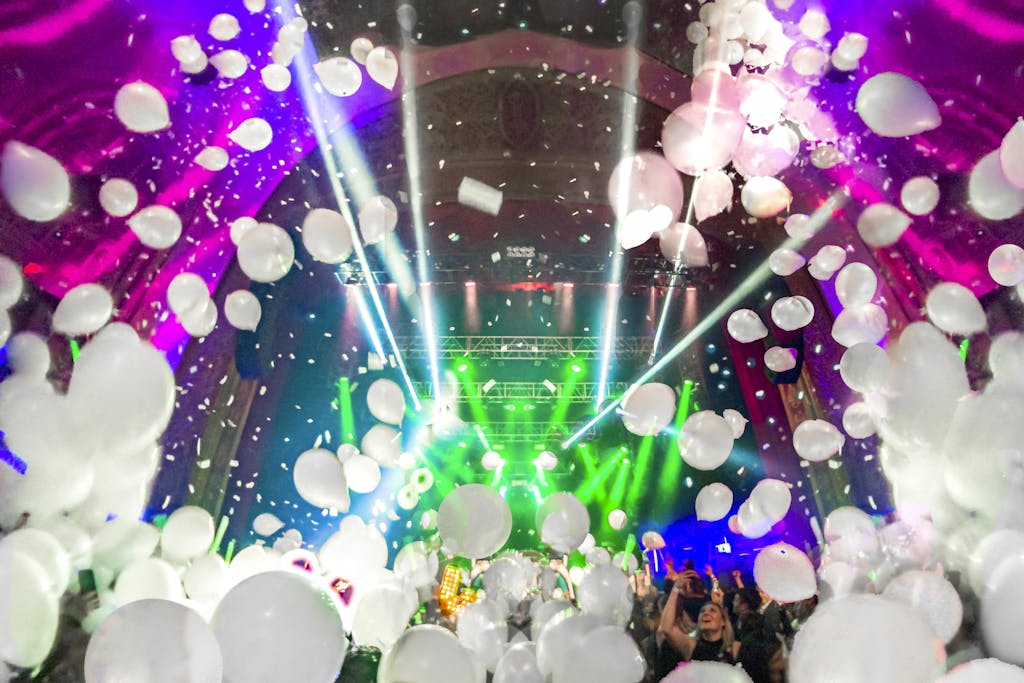
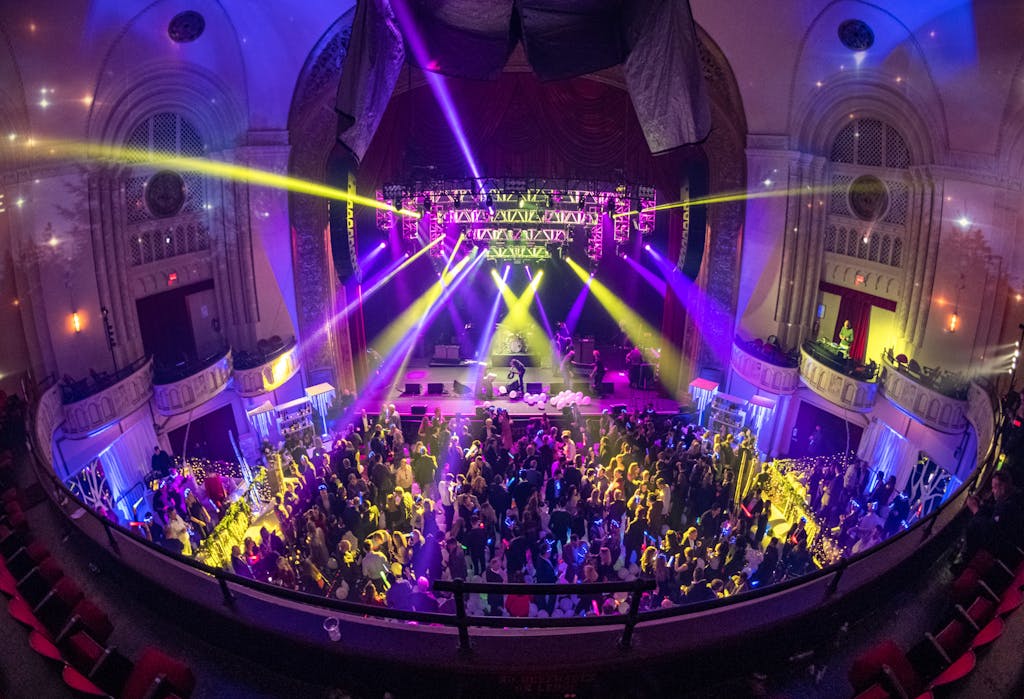
The Chill Lounge at The Capitol Theatre | photographer: Scott Harris Photo
What effects can be used to amplify lighting?
Being able to push haze, smoke, or dry ice are incredibly helpful to create a lot of the drama that lighting offers. Unfortunately, many venues don’t allow these tools because of very sensitive smoke detectors (one of the many reasons that I love tents).
I often use the burnt Thanksgiving dinner analogy to show people what I’m talking about. Every kitchen has lighting — usually overhead, perhaps some cool pendants, and they serve their purpose. They light the room and the surfaces in the room. When that turkey gets burnt and the kitchen fills with smoke, you see something you don’t often see. It’s the beam of light that’s emanating from the fixtures.
There are so many other effects that can help amplify lighting. We recently produced an event where we cut abstract patterns into the sides of some custom highboys (tall chests of drawers) and installed a light inside. This created a spectacular lighting pattern all around each highboy.
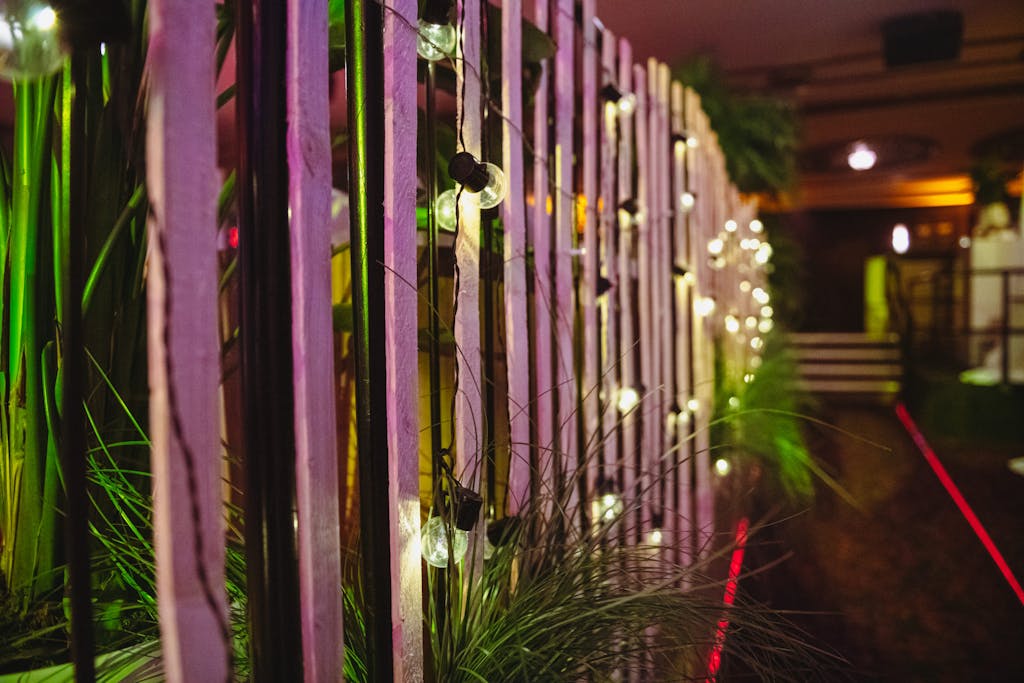
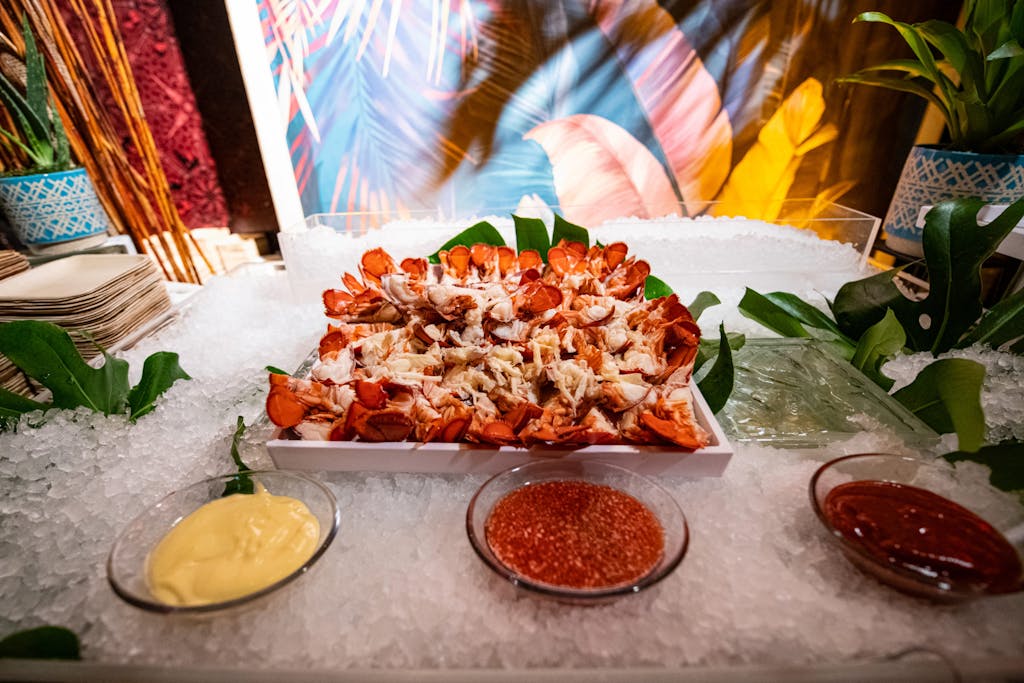
Festive Holiday Party at The Capitol Theatre | photographer: Scott Harris Photo
How does a lighting team work with other vendors to realize an event vision?
It is incredibly important to get a scope of work from all other vendors in order to optimally light an event. First (and not sexy at all), is power. While many lighting fixtures are either battery-powered or LED, when doing a comprehensive lighting plot, there is a need for significant power.
Next is rigging. Are the lighting fixtures going to fly (be mounted overhead), or will they be ground-stacked (mounted either on the floor or on an apparatus that is on the floor)? What are the other components in the room? Will there be a ceiling treatment? What are sight-line issues? What is the path that is intended for guests to walk? Where should their focus go?
It’s interesting, because often, lighting is the first thing that goes into an event, but the last thing that’s finalized. It’s imperative that the décor, entertainment, and cuisine display be done in collaboration with lighting. What’s the point in spending money on a centerpiece if nobody is going to see it? How can a bartender make a drink in the dark?
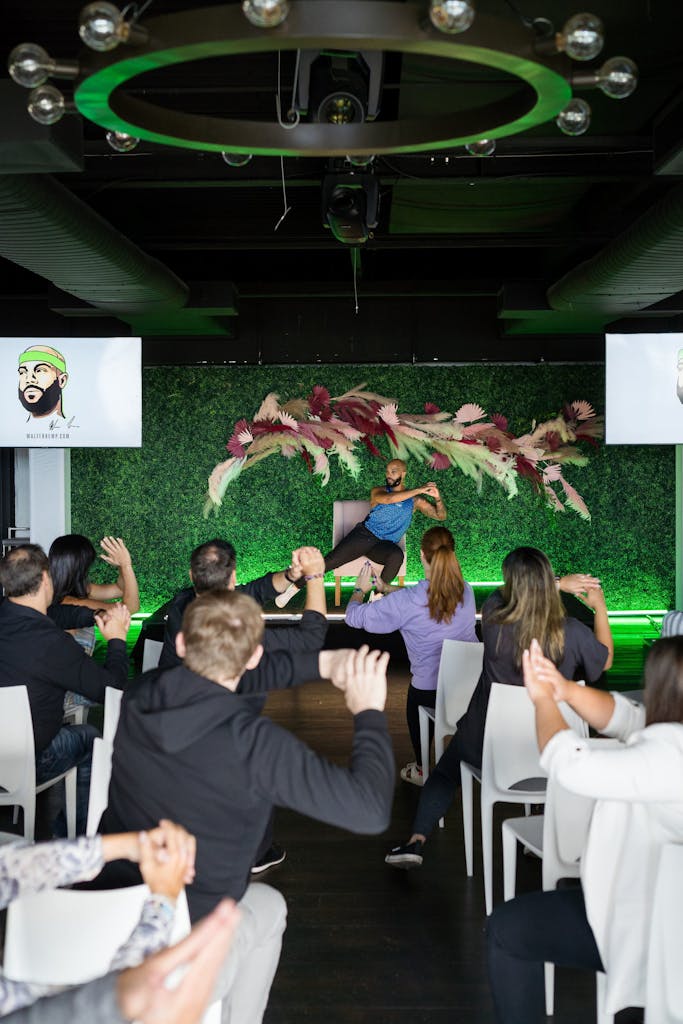
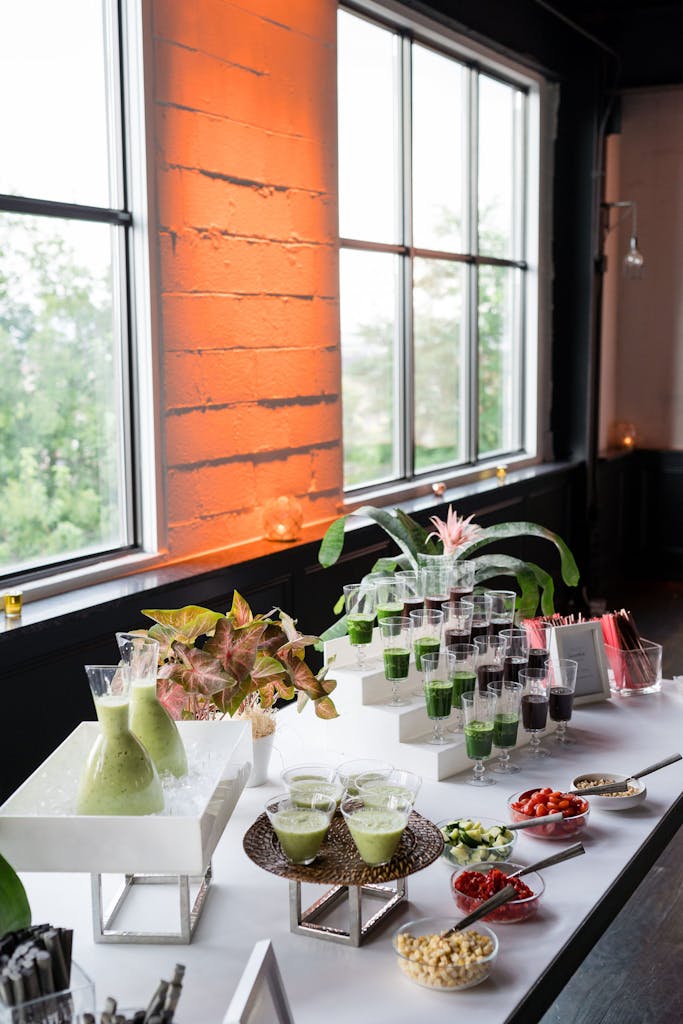
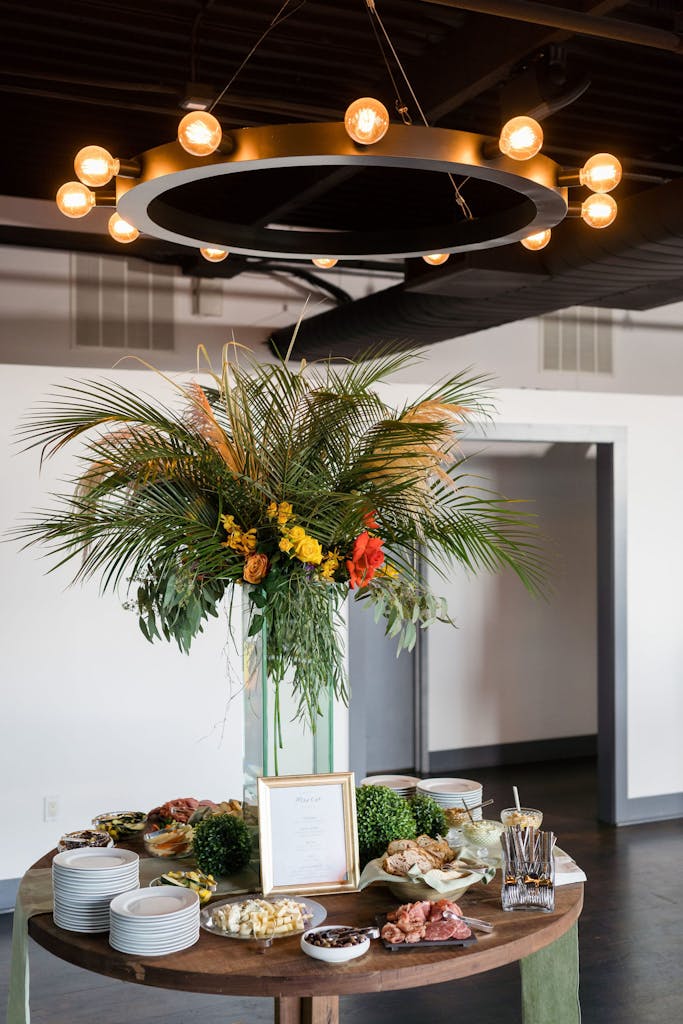
WIPA New York Wellness Luncheon at Hudson Loft | photographer: JC Lemon Photography
Can you talk about the special challenges of lighting in more remote venues like a garden, beach, or tent? And how about lighting at daytime events?
Lighting is important no matter what the experience, venue, or goals. Sometimes, the sun provides enough lighting — making Mother Nature the lighting designer. However, we find that even during daytime events, it’s important to think about lighting. What time of day is the event? What is the weather? Will there be shadows? By lighting the event in the right way, with the proper fixtures, we have the ability to lock in the desired look, feel and drama that our client is attempting to evoke.
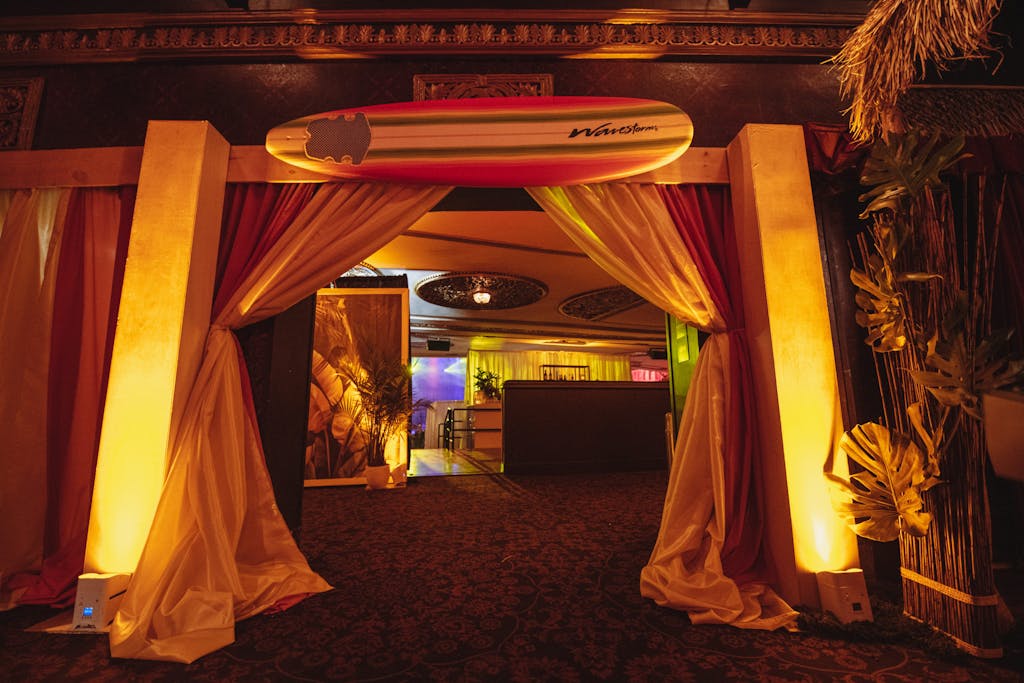
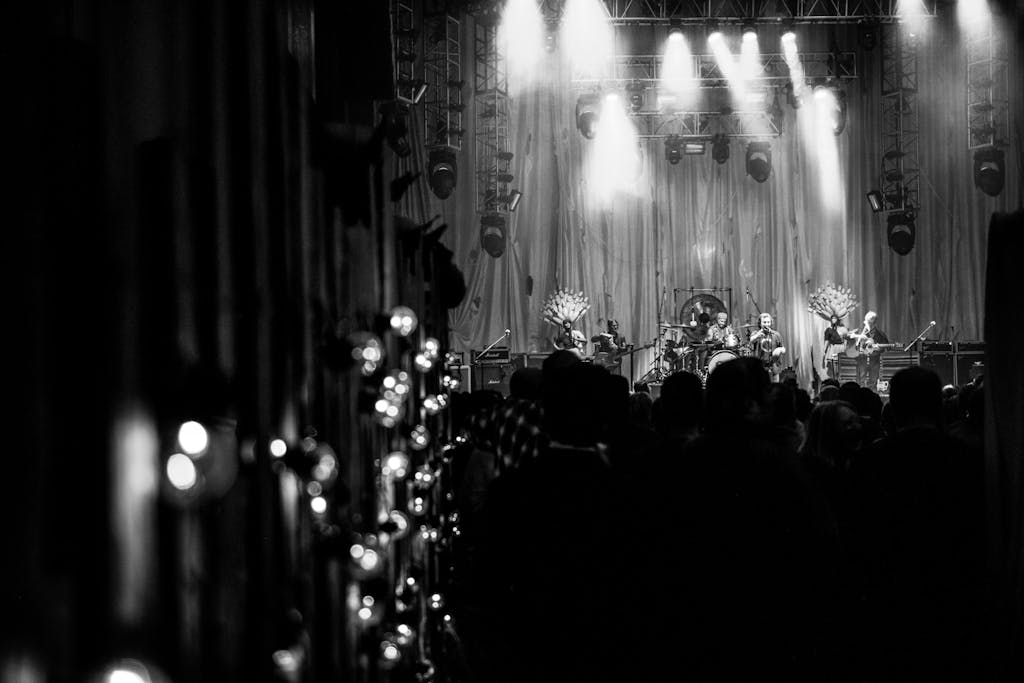
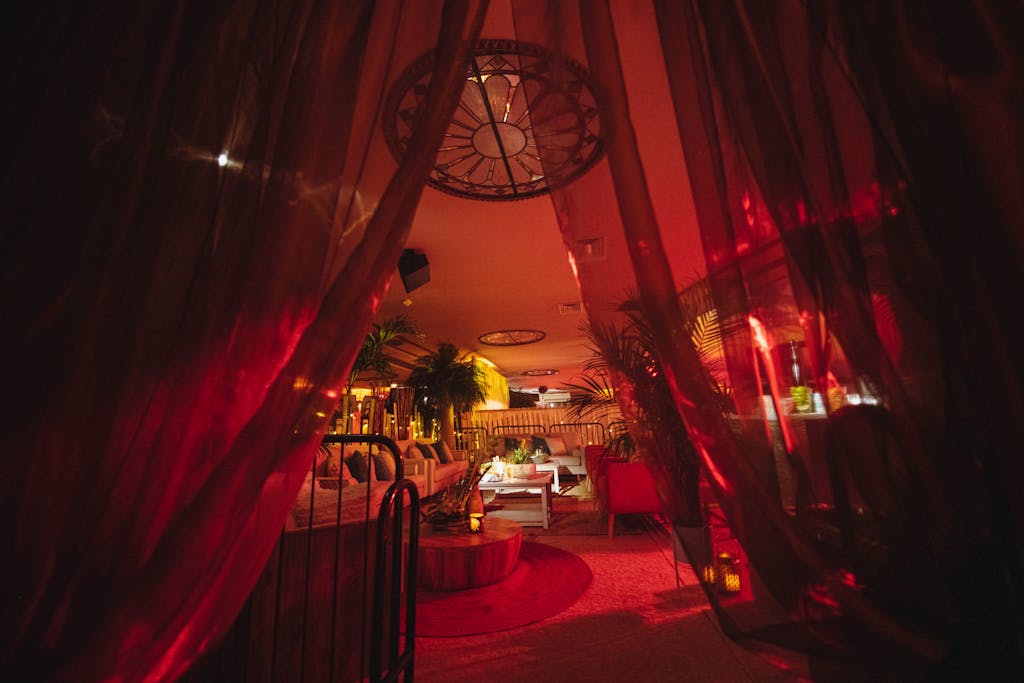
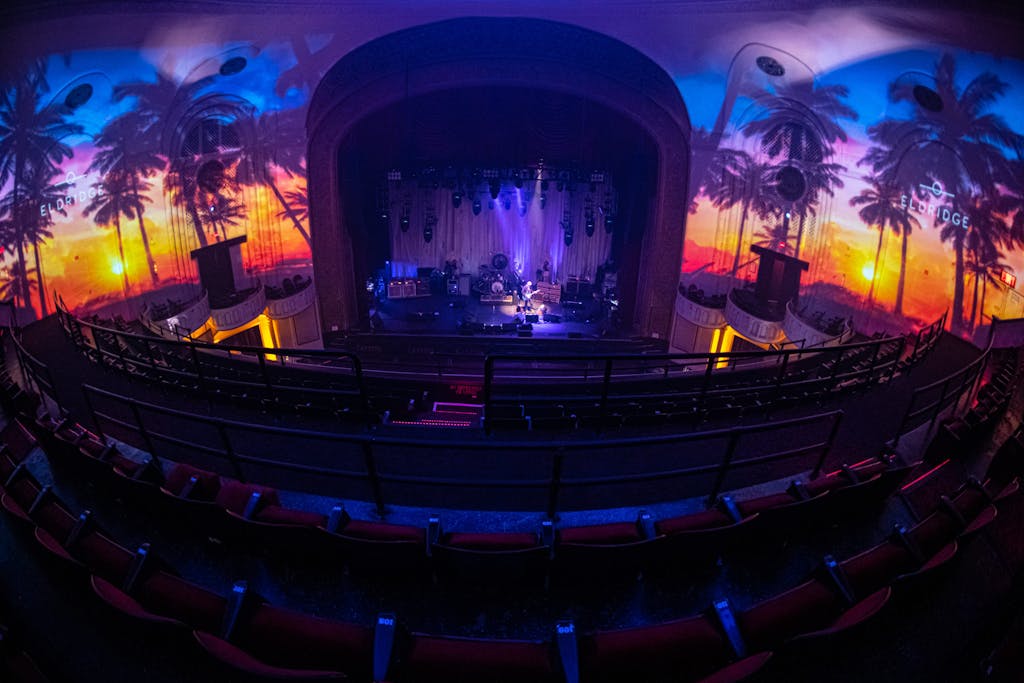
Corporate Party with Big Name Entertainment at The Capitol Theatre | photographer: Andrew Blackstein
Why should you hire an event lighting company versus relying upon the options available at a venue?
There are many spectacular event spaces throughout the world (we’ve installed lighting in some of them), and a lot of them have spent time and money to bring in lighting that helps to create a “baseline” look that fits the overall drama of the venue.
If a client is looking for that exact look, then they’re fine using what the facility has to offer. The only rub is that while a space might fit one of the lighting “looks” a client is looking for, when creating a really dramatic and memorable experience, events should have multiple lighting transitions and dynamics.
People Also Ask…
How can I get started planning my own event?
PartySlate is your go-to planning resource for events of all kinds — including weddings. Use PartySlate to find a venue, assemble your vendor list, and gather trending inspiration — plus classic ideas. Get started by clicking on the following:

